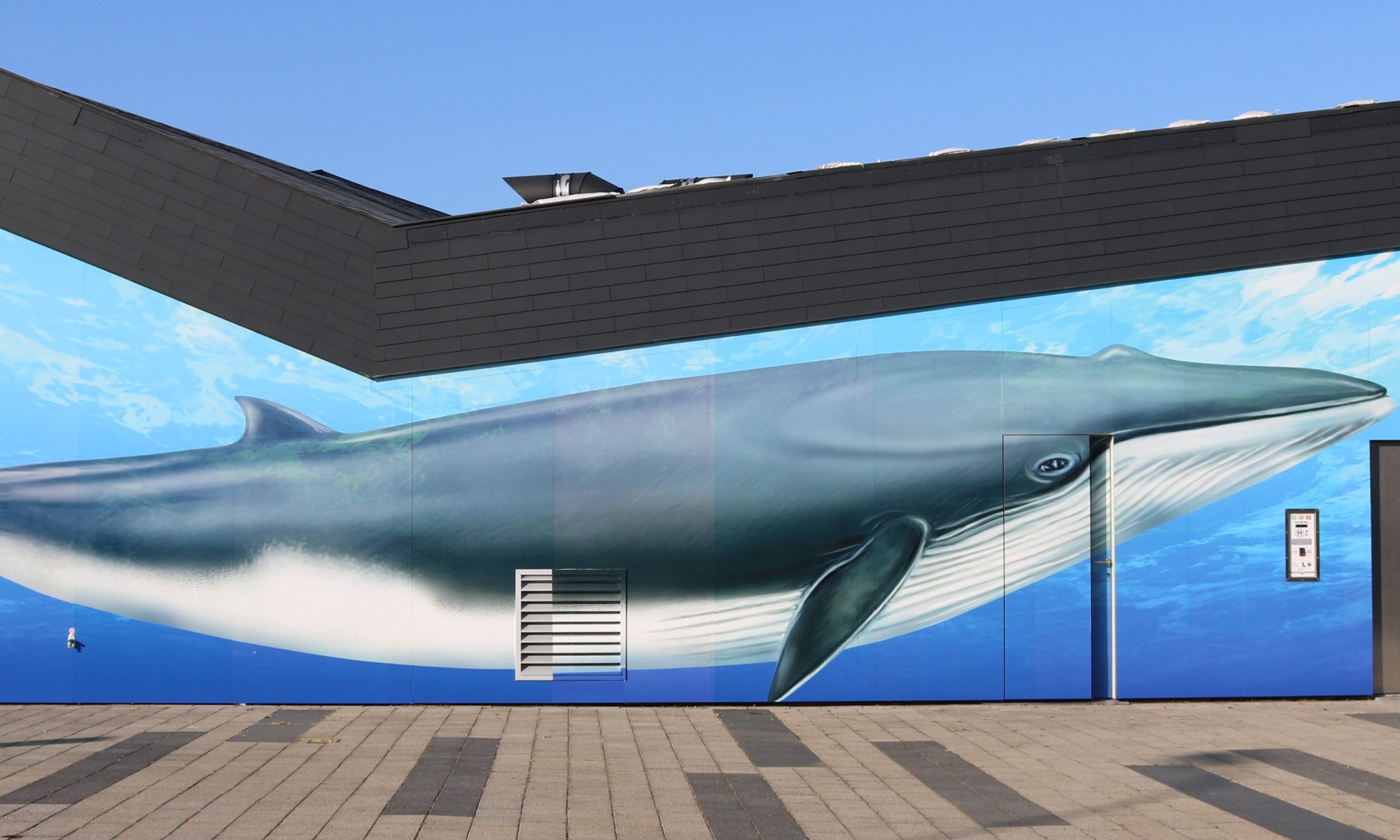From 1 July to 31 August 2019, the summer exhibition ‘Kijk, een walvis (Look, a whale)’ will take place in the community centre ‘t Schelpestik in De Haan (Vosseslag 131, 8420 De Haan). The local stranding of the whale Antonius in October 2018 triggered the initiative, and several skeletal parts of this impressive animal have since returned to De Haan to form the backbone of the exhibition. The municipality of De Haan also spared no effort in addressing various experts and collections to bring together a unique collection of marine mammal bones and whale-related items. The exhibition can be visited daily between 10 a.m. and 1 p.m. and between 2 p.m. and 5 p.m. during this period, and admission is free. A tip for the summer months!
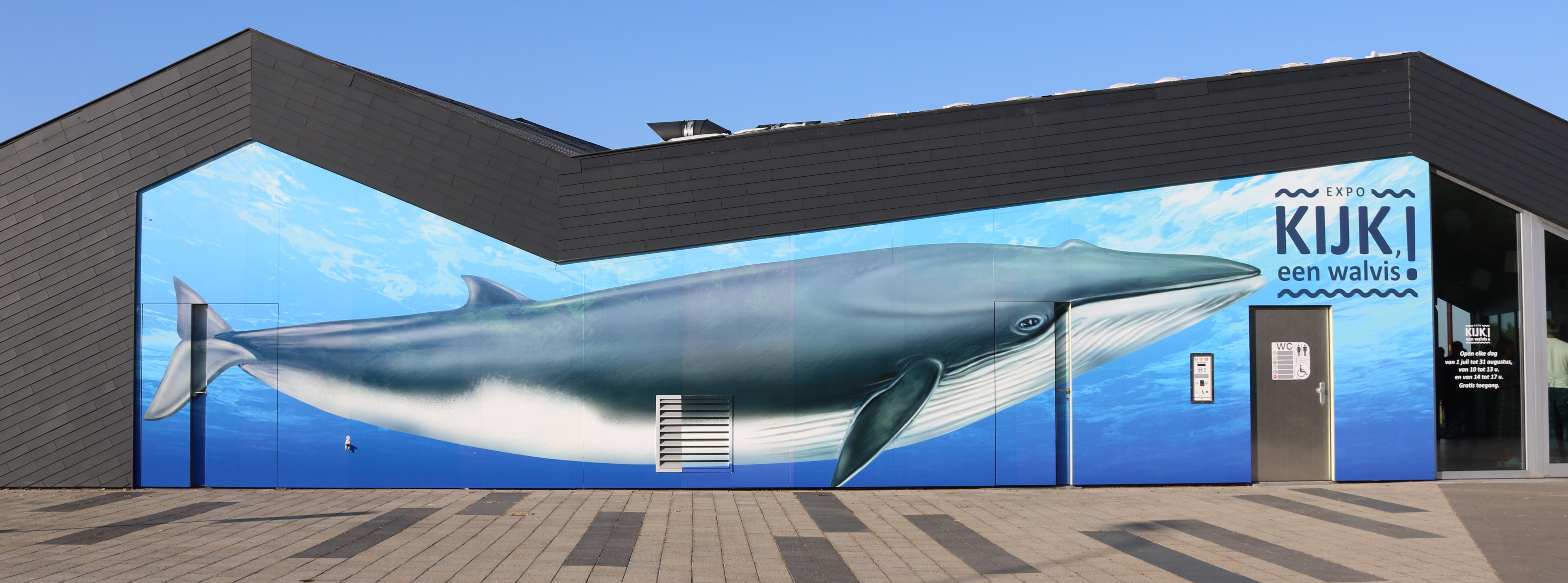
Antonius
On 24 October 2018, the carcass of a Fin whale Balaenoptera physalus was spotted in the Belgian part of the North Sea. Because it floated in a busy shipping lane, it was decided to bring it ashore in a controlled manner. On 25 October, around 2 a.m. at night, the carcass arrived on the beach of Vosseslag, De Haan. Within one day the animal was completely disposed of. Action had to be quick as a spring tide was approaching. “It was a fantastic experience to witness the perfect cooperation between many government agencies, at every level of government, and scientific institutions, resulting in a thorough scientific investigation and a quick and efficient removal of the remains,” says Jan Haelters, coordinator of the Belgian stranding network and marine biologist at the RBINS, with justified pride.
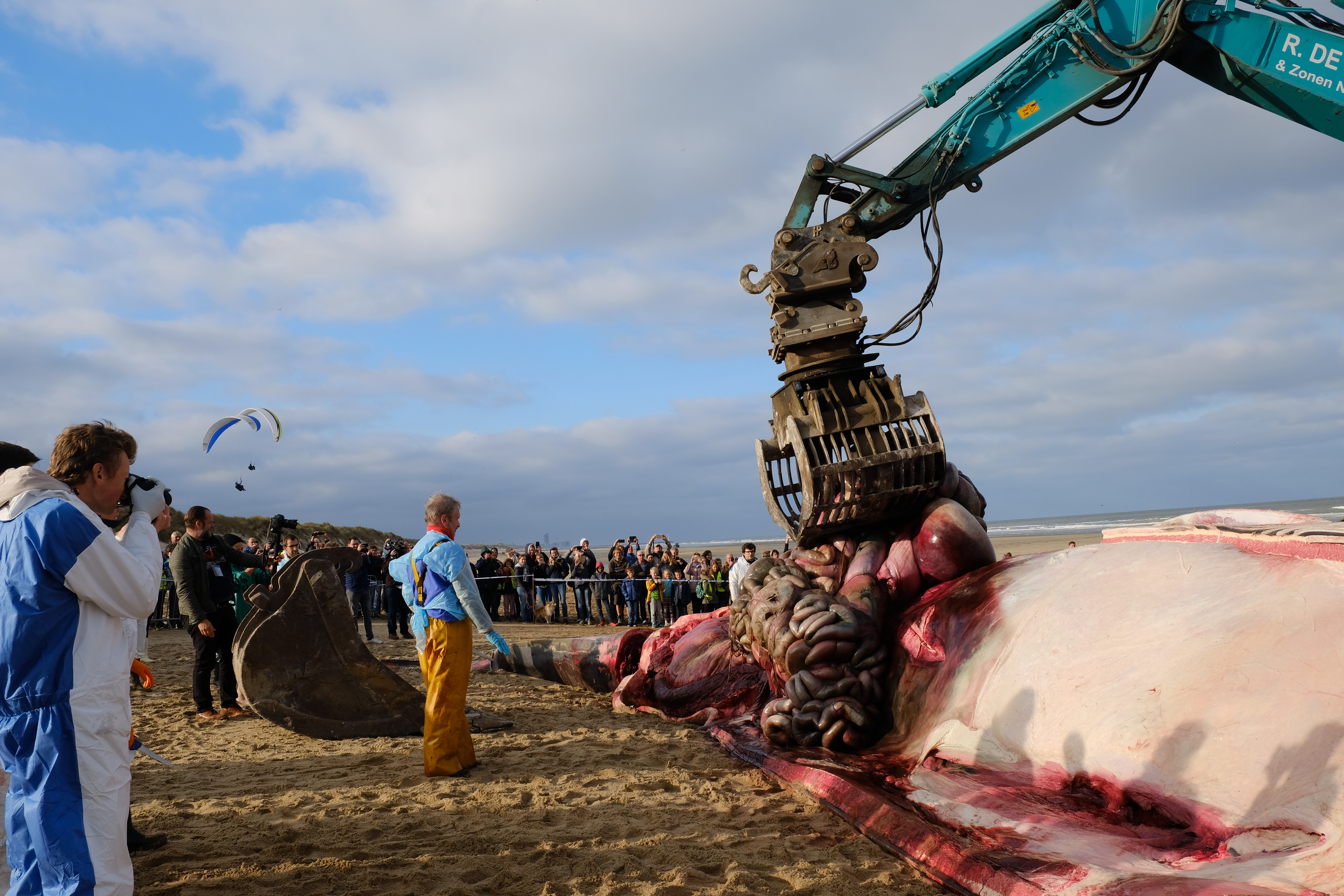
The autopsy, carried out by veterinarians and students of the universities of Ghent and Liège and biologists of the RBINS, showed that the almost mature male, 18 m long and weighing about 30,000 kg, had probably died a natural death. “I immediately saw the potential of this event and asked the city council for permission to have parts of the skeleton prepared.” Wilfied Vandaele, mayor of De Haan, announces. This permission was granted, and the Faculty of Veterinary Medicine of the University of Ghent prepared not only the mandibles but also a pectoral fin and a vertebra of the whale, which in the meantime had been baptised Antonius.
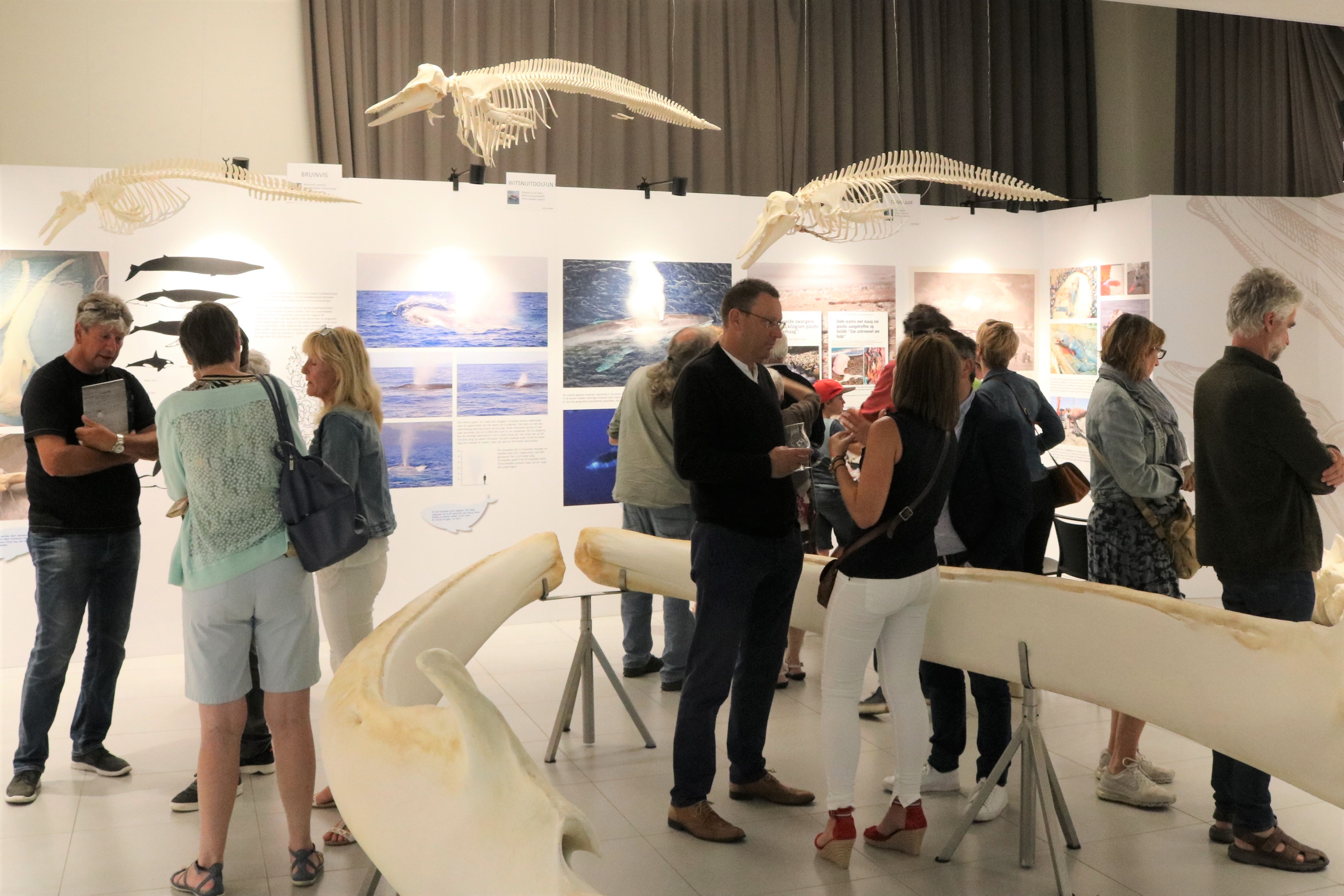
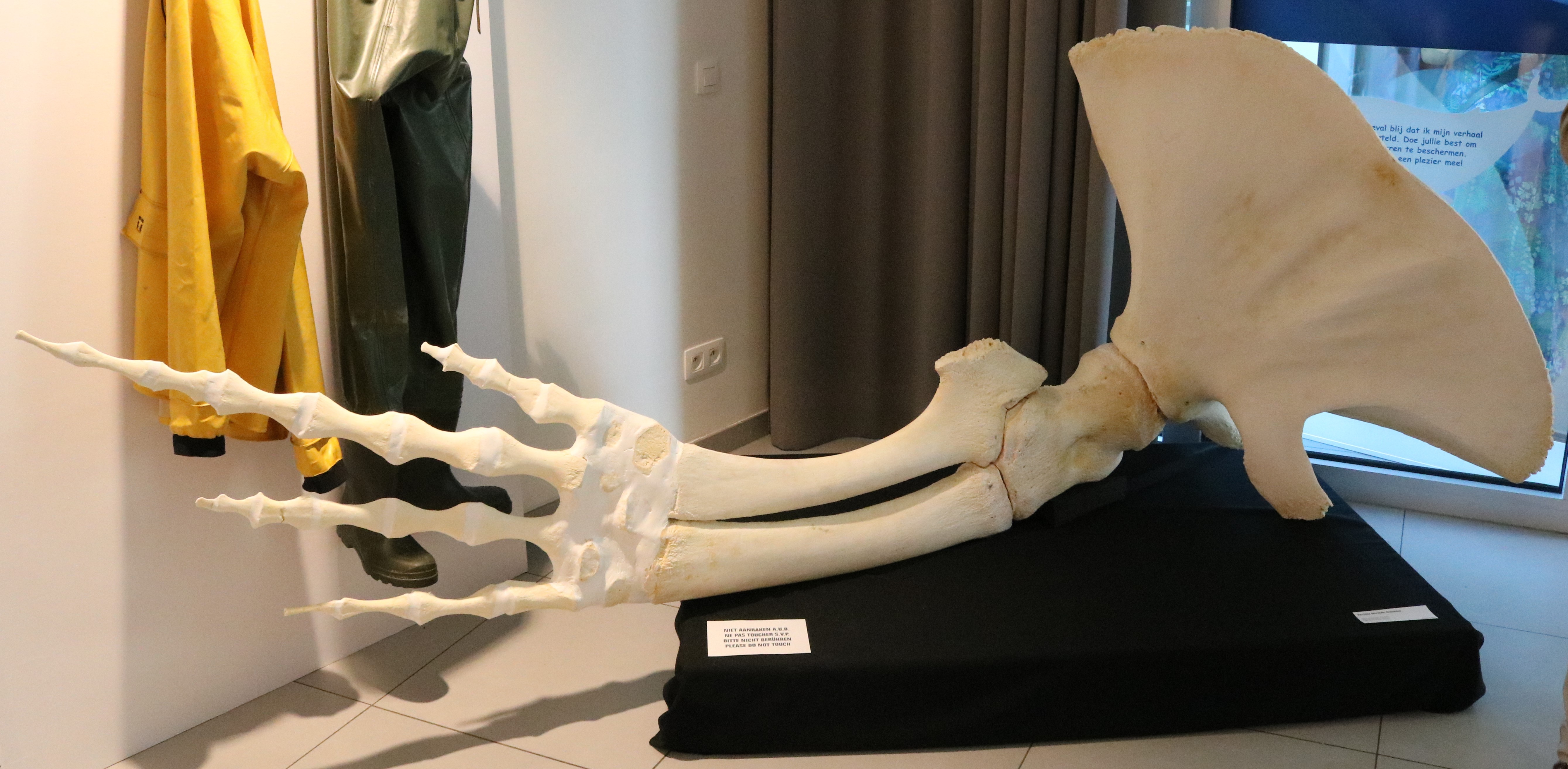
Marine Mammals in De Haan
Fin Whale Antonius obviously is the eye-catcher of the exhibition, but this was not the first unfortunate marine mammal that ended up on a beach in De Haan. “Parts of a number of rare specimens that washed ashore in this municipality in the past have also been prepared and are now part of the RBINS collection.” explains Olivier Pauwels, curator of the RBINS vertebrate collection. Mayor Vandaele adds: “We were given some skeletons and remains of marine mammals on loan, such as the skull of a young Killer whale Orcinus orca that beached in 1843. These items are used in the second part of the exhibition to illustrate the life and problems of marine mammals.”
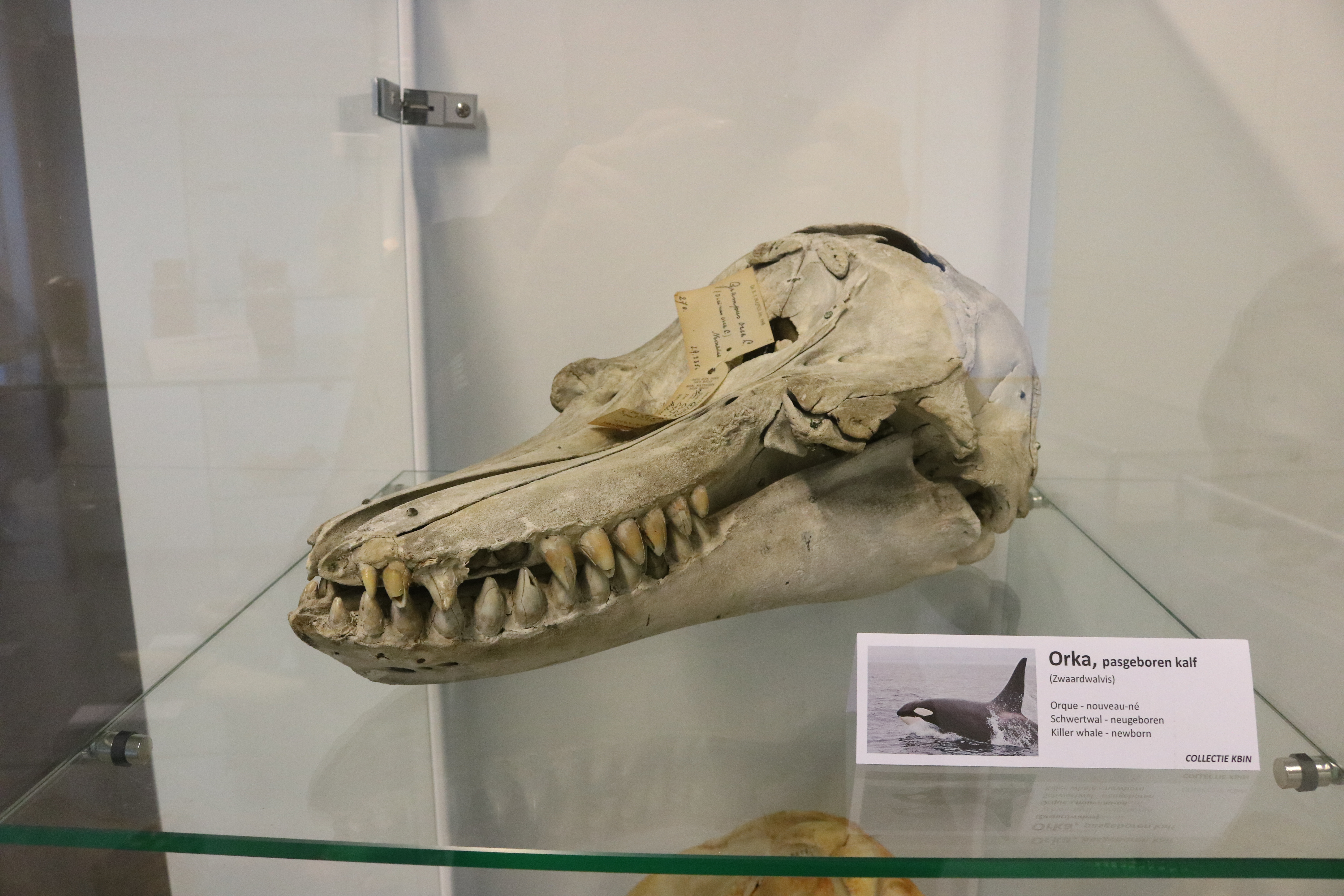
Furthermore, two skulls of Sowerby’s beaked whales Mesoplodon bidens (mother with juvenile, washed ashore in 1933 in Harendijke in the district of Wenduine) and one of a Long-finned Pilot Whale Globicephala melas (washed ashore in 1995 in De Haan) found their way from Brussels to the summer exhibition. And because the district of Wenduine has a special relationship with the Harbour porpoise Phocoena phocoena (the species appears in Wenduine’s coat of arms), a porpoise skull has also been added to the collection lent out by the RBINS. “Thanks to Fin whale Antonius and the animals that beached in De Haan previously, and thanks to the cooperation with the municipality of De Haan, we have the opportunity to connect two major pillars of our institute – research and collection – and to put them in the spotlight together!” explains Kelle Moreau, marine biologist and spokesman for the RBINS.
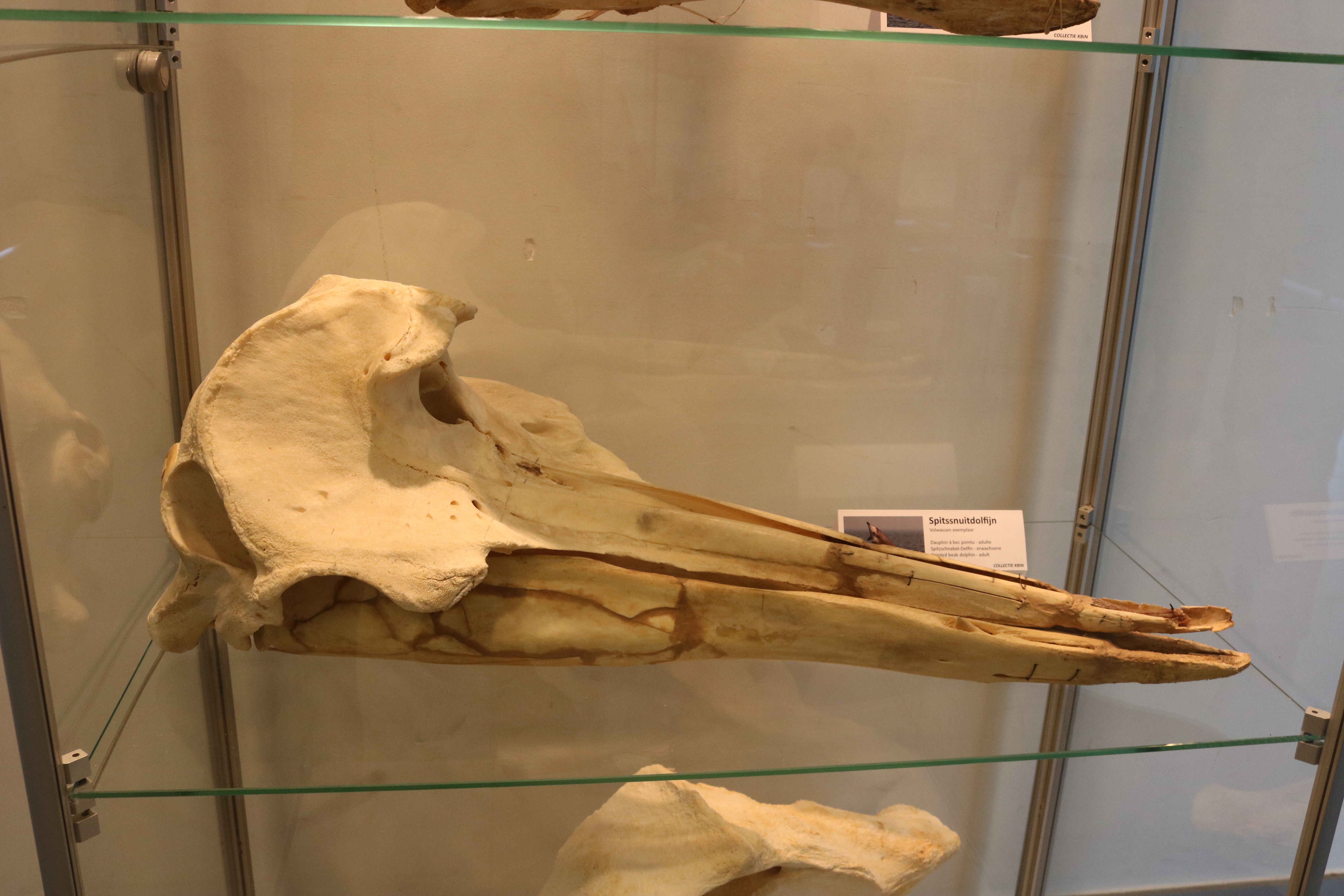
Extra information and activities
Finally, the De Haan staff also visited the Dutch nature centre Ecomare on Texel. Some dolphin skeletons were borrowed here, as well as a series of historical utensils related to whaling. In the margin of the exhibition, also a number of other activities have been set up. For example, there are a cycling and hiking tour and creative workshops for children.
The unique combination of the story (and parts) of Antonius and various other biological and historical stories, told by means of rare artefacts, elaborated on clear information panels and extended with additional activities, render ‘Kijk, een walvis’ an exhibition that is definitely worth a visit! Highly recommended for young and old, and a valuable tip for the summer months!

